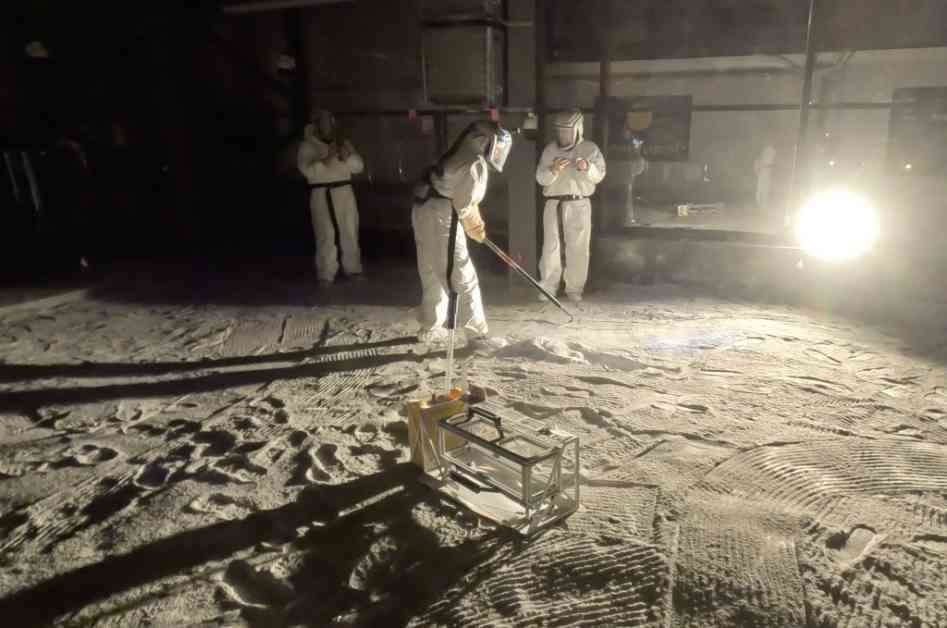NASA Tests Artemis Science Instrument in Moon-Like Sandbox
NASA recently conducted a series of tests on its Lunar Environment Monitoring Station (LEMS) instrument suite in a simulated Moon regolith sandbox at the Florida Space Institute’s Exolith Lab. The purpose of these tests was to evaluate how the LEMS hardware would interact with lunar regolith, the dusty, soil-like material that covers the Moon’s surface. The research is crucial for the development of the LEMS instrument package, which is slated to accompany Artemis III astronauts on their mission to the Moon in late 2026.
The LEMS instrument suite is designed to operate both day and night, allowing for continuous monitoring of the lunar environment. One of the key components of the LEMS package is two seismometers built by the University of Arizona. These seismometers will be deployed to the Moon’s surface to conduct long-term monitoring of moonquakes and meteorite impacts, providing valuable data for future lunar exploration missions.
Simulating Lunar Conditions
The simulated Moon regolith sandbox at the Exolith Lab replicates the conditions that the LEMS instrument suite will encounter on the lunar surface. By testing the hardware in this controlled environment, scientists and engineers can assess how it will perform in the harsh lunar environment, where temperatures fluctuate drastically and the surface is covered in abrasive regolith. Understanding how the LEMS instruments interact with lunar regolith is essential for ensuring their reliability and accuracy during the Artemis III mission.
During the testing process, researchers observed how the LEMS hardware collected data and transmitted it back to Earth. They also evaluated the instrument’s ability to withstand the extreme conditions of the lunar environment, such as temperature variations and exposure to dust and debris. By simulating these conditions in the Moon regolith sandbox, scientists can identify any potential issues and make adjustments to the hardware before it is deployed on the lunar surface.
Preparing for Artemis III
The Artemis III mission is a critical step in NASA’s efforts to return humans to the Moon and prepare for future crewed missions to Mars. The LEMS instrument suite will play a crucial role in gathering data about the lunar environment, helping scientists better understand the Moon’s geology and seismology. By monitoring moonquakes and meteorite impacts, the LEMS instruments will provide valuable insights that will inform future exploration activities on the Moon and beyond.
In addition to the seismometers, the LEMS instrument package includes a suite of sensors and cameras that will capture detailed images and data about the lunar surface. This information will be used to create high-resolution maps of the Moon’s topography and geology, aiding in the selection of landing sites for future missions. The data collected by the LEMS instruments will also contribute to our understanding of the Moon’s history and evolution, shedding light on its formation and geological processes.
As NASA continues to prepare for the Artemis III mission, testing the LEMS instrument suite in a simulated Moon regolith sandbox is a critical step in ensuring the success of the mission. By evaluating how the hardware interacts with lunar regolith and simulating the conditions it will encounter on the lunar surface, scientists and engineers can identify any potential issues and make necessary adjustments before the instruments are deployed. The data collected by the LEMS instruments will be invaluable in advancing our knowledge of the Moon and preparing for future human exploration missions beyond Earth’s orbit.













